Measure the width and length of the sports field in mm.
Width = \(\text{50}\) \(\text{mm}\). Length = \(\text{100}\) \(\text{mm}\).
|
Previous
6.2 Number and bar scales
|
Next
End of chapter activity
|
Knowing how to use scale maps is an important skill. It is also useful to know how to describe the position of an object (like a shop in a shopping centre, or classroom at your school) in relation to the objects around it.
For example, if you are at home and your friend is nearby and wants to visit you, you will need to give them instructions to get to your house, such as “turn left at the corner of Flower Street, walk straight down the road, pass the shop on your left, turn right into Yellow Street and my house is number \(\text{14}\), with the green gate”.
In this section we will continue to work with the number and bar scales. We will also learn how to interpret and write simple directional instructions, and how to read seating and floor plans.
Study the classroom plan below and answer the questions that follow:
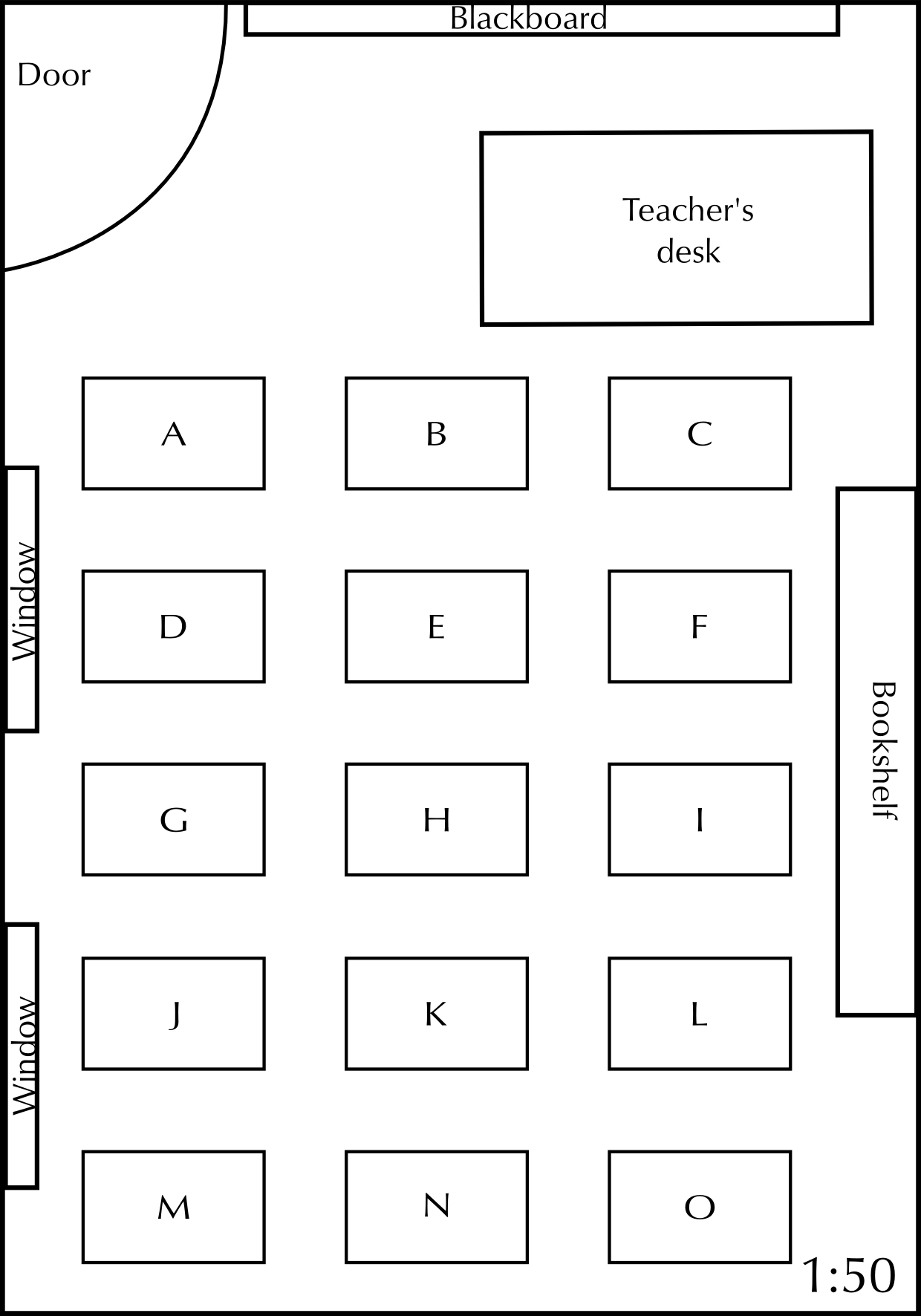
The scale of this plan is given as \(\text{1}\) : \(\text{50}\). Using your ruler and calculator, calculate:
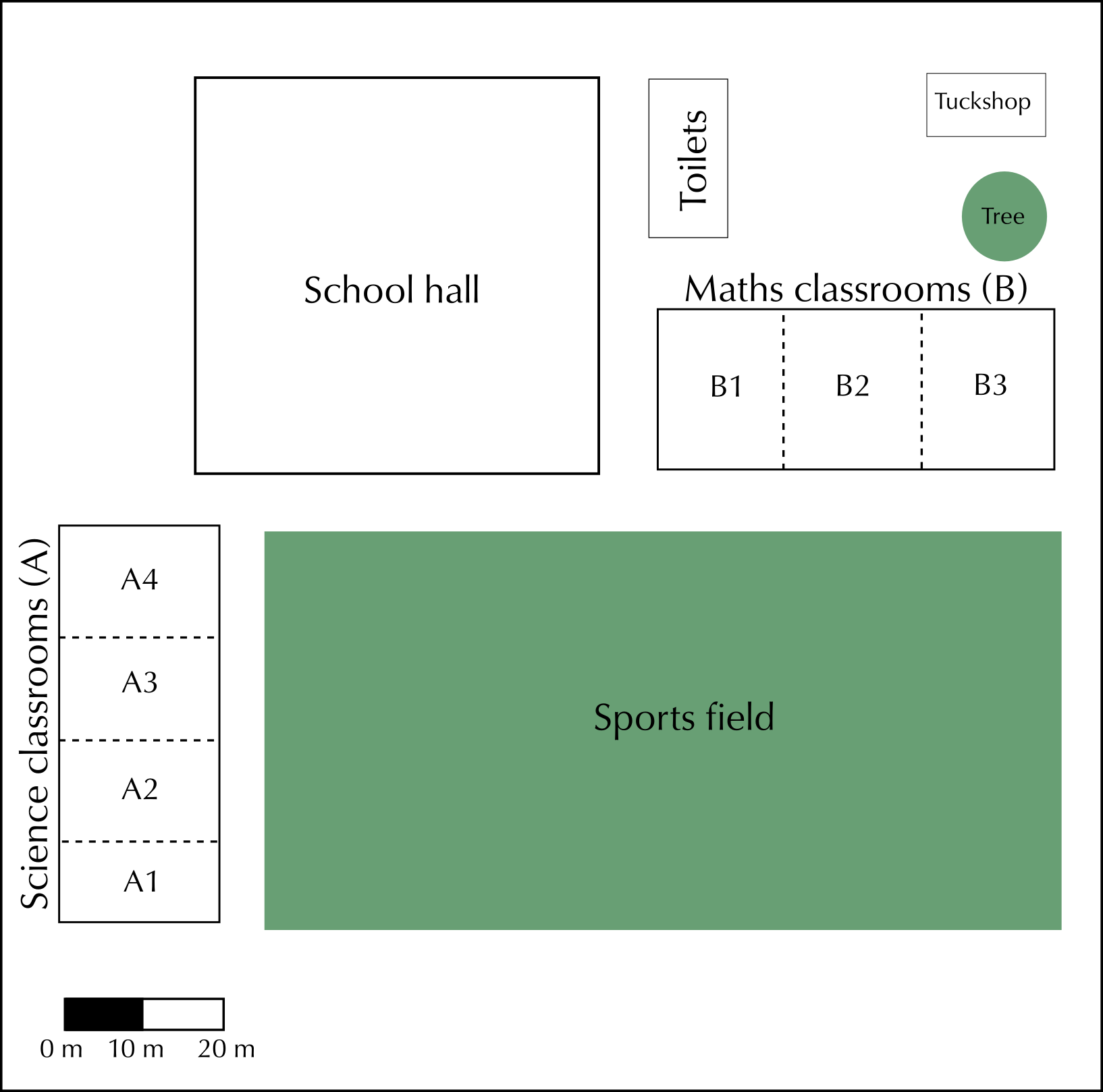
Measure the width and length of the sports field in mm.
Width = \(\text{50}\) \(\text{mm}\). Length = \(\text{100}\) \(\text{mm}\).
Use the bar scale to estimate the real (actual) width and length of the field in metres.
\(\text{10}\) \(\text{mm}\) on ruler = \(\text{10}\) \(\text{m}\) on the ground. Width = \(\text{50}\) \(\text{mm}\). \(\text{50}\) \(\text{mm}\) \(\div\) \(\text{10}\) \(\text{mm}\) (length of one segment of bar scale) = \(\text{5}\) segments. \(\text{5}\) segments \(\times\) \(\text{10}\) \(\text{m}\) = \(\text{50}\) \(\text{m}\). Length = \(\text{100}\) \(\text{mm}\). \(\text{100}\) \(\text{mm}\) \(\div\) \(\text{10}\) \(\text{mm}\) (length of \(\text{1}\) segment) = \(\text{10}\) segments. \(\text{10}\) segments \(\times\) \(\text{10}\) \(\text{m}\) = \(\text{100}\) \(\text{m}\).
What subject would you be studying if you are in classroom A3?
Science.
What subject is taught in the classrooms that are next to the hall and face the sports fields?
Mathematics.
Tebogo, a new learner, has started at your school. You are in the Science classroom, A1, when the break bell rings. Explain to Tebogo how to get to the tuckshop.
Walk out of the Science classroom towards to sports field. Turn left, and walk along the edge of the field towards to school hall building. At the school hall, turn right. At the first opportunity, turn left (before the maths classrooms) and walk past the maths building. Then turn right and walk straight towards the tree. At the tree, turn left. The tuckshop will be the building in front of you.
Study the cinema seating plan below and answer the questions that follow:

Study the plan of a rugby stadium below, and answer the questions below:
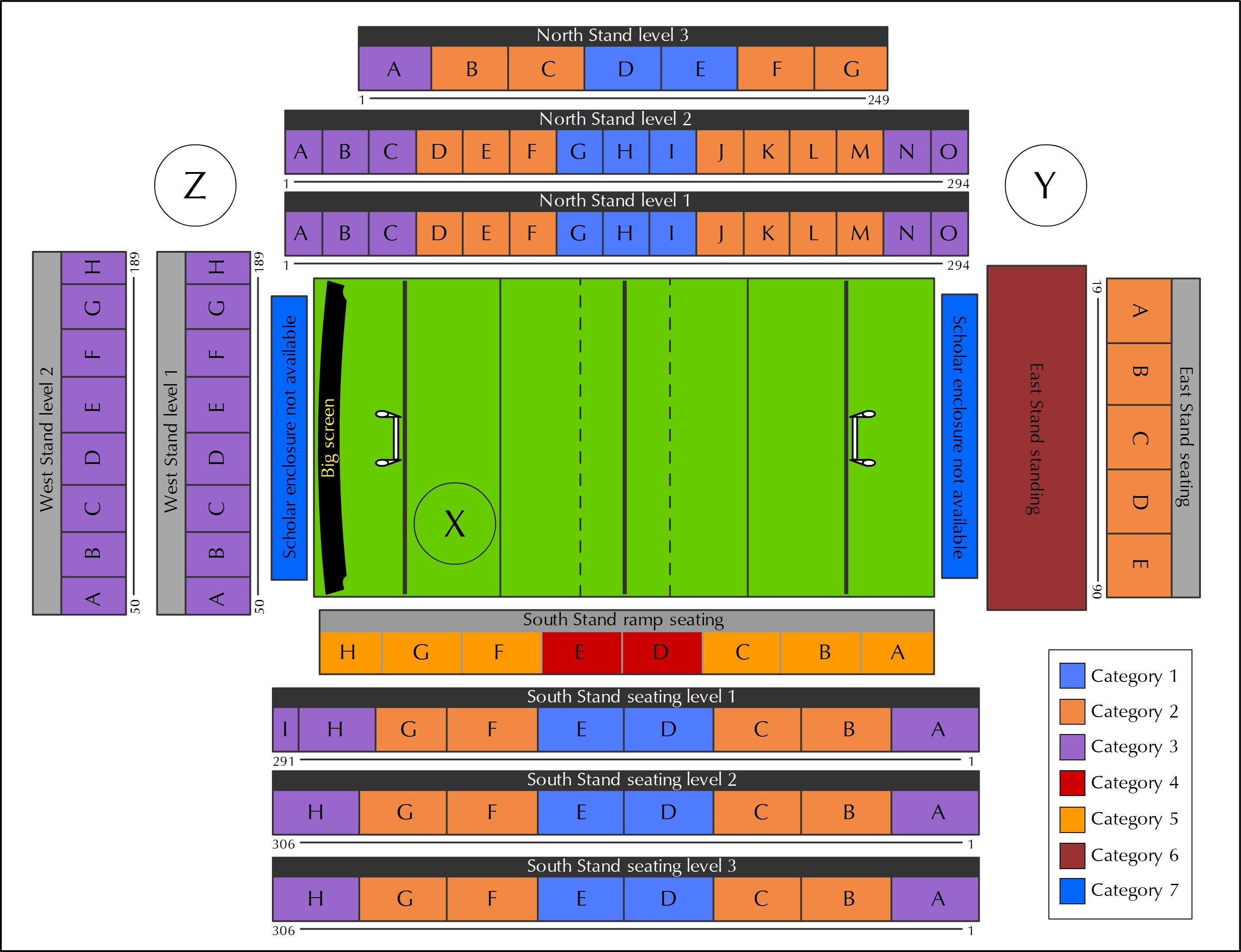
Using words such as “near to” and “in the middle of”, describe the position of a player standing at the point marked X.
A player at Point X would be standing on the field, near the left hand side goal posts, and the Category 5 seats in Block G of the South Stand ramp seating.
Why do you think the seats are categorised?
The seats are colour-coded and categorised by price.
Describe the position of the stand that contains the most Category 3 seats.
The West Stand has the most Category 3 seats. It is on the left of the stadium, between the North Stand and the South Stand.
If your are standing at Point Y, what is the quickest way to get to the South Stand Ramp seating?
Walk behind the East stand seating, with the stadium on your right. Then turn right and walk straight to the South Stand Ramp seating.
Describe the position of the hot dog stand at Point Z.
The hot dog stand at Point Z is in the top-left corner of the diagram. It is between the West and North Stands.
Your friend is at the hot dog stand (at Z). Explain to him how to find you if you are seated in a category 5 seat, Block A.
Walk behind the West stands (with the stands on your left). Turn left at the end of the stands, and walk straight to the edge of the South Stand ramp seating. Walk between the South Stand Ramp seating and South Stand Seating Level 1, past Blocks H, G, F, E, D, C and B. Block A (category 5) is on your left, at the end of the South Stand Ramp Seating.
The width of the rugby field is \(\text{70}\) \(\text{m}\) the length \(\text{144}\) \(\text{m}\). Draw a scale drawing of the rugby field using the number scale \(\text{1}\) : \(\text{1 000}\).
Width = \(\text{70}\) \(\text{m}\) = \(\text{7 000}\) \(\text{cm}\). \(\text{7 000}\) \(\text{cm}\) \(\div\) \(\text{1 000}\) = \(\text{7}\) \(\text{cm}\). So scaled width is \(\text{7}\) \(\text{cm}\). Length is \(\text{144}\) \(\text{m}\) = \(\text{1 440}\) \(\text{cm}\). \(\text{1 440}\) \(\text{cm}\) \(\div\) \(\text{1 000}\) = \(\text{14,4}\) \(\text{cm}\). So scaled length is \(\text{14,4}\) \(\text{cm}\).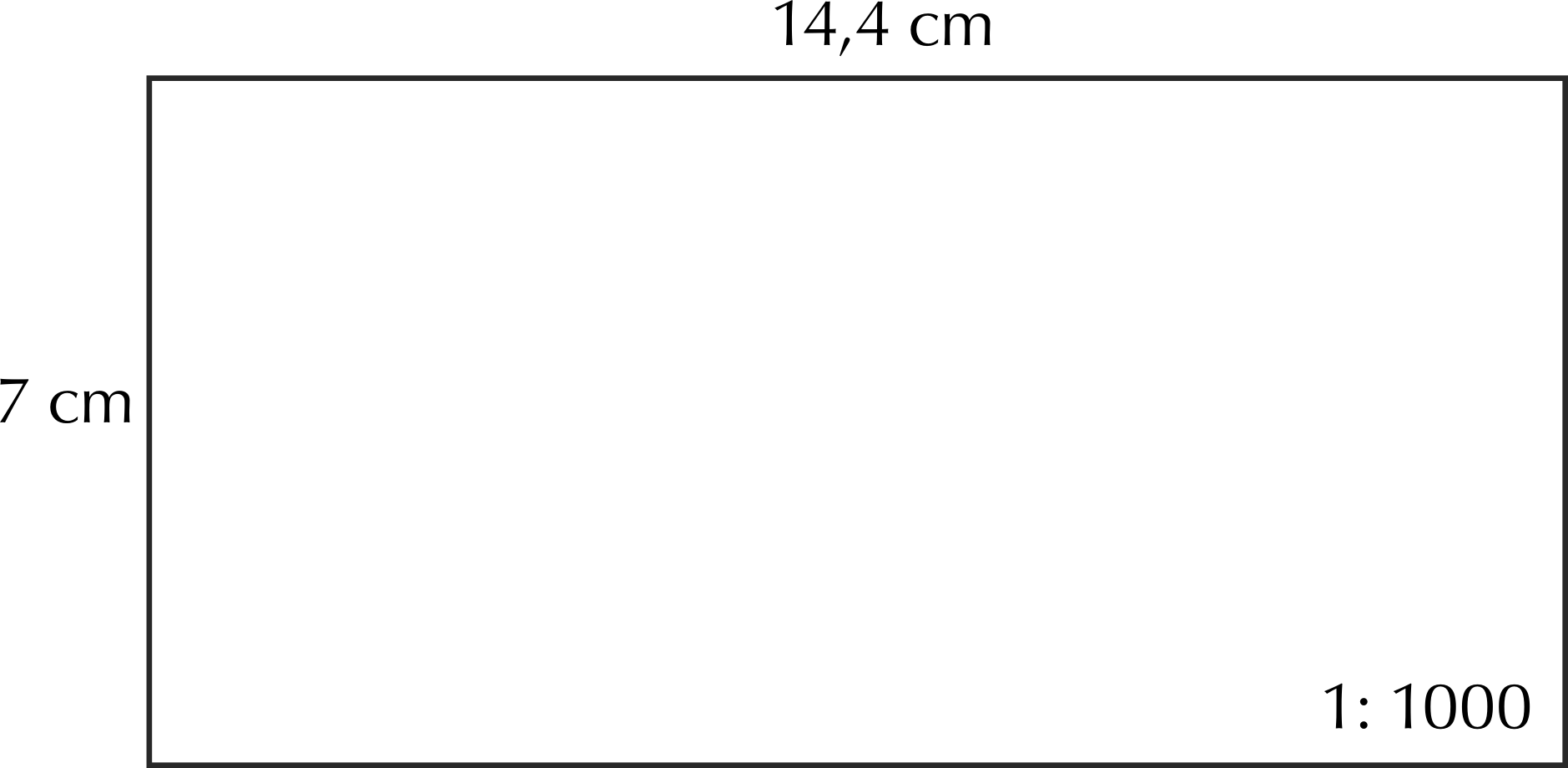
We will study floor plans and symbols in more detail in Chapter 10, but for the next worked example it is important to understand that symbols are often used on maps as a short-hand way of representing information. Some symbols that you may be familiar with are:
Lift | Escalator | Stairs | Toilets | Restaurant | Disabled Access |
|
|
|
|
|
|
Study the map of the shopping centre below and answer the questions that follow:
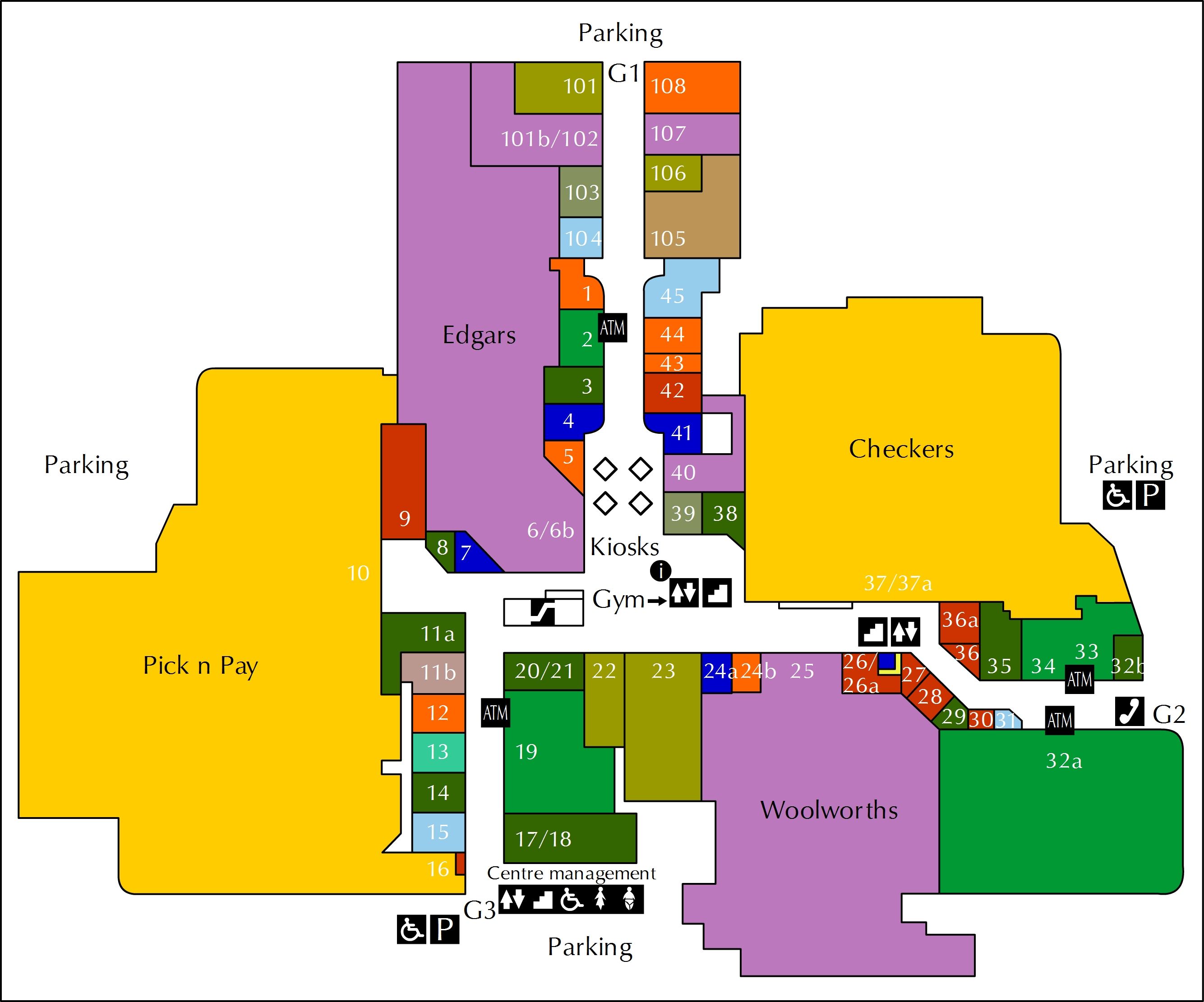
Study the map of the ground floor of a shopping centre and answer the questions that follow:
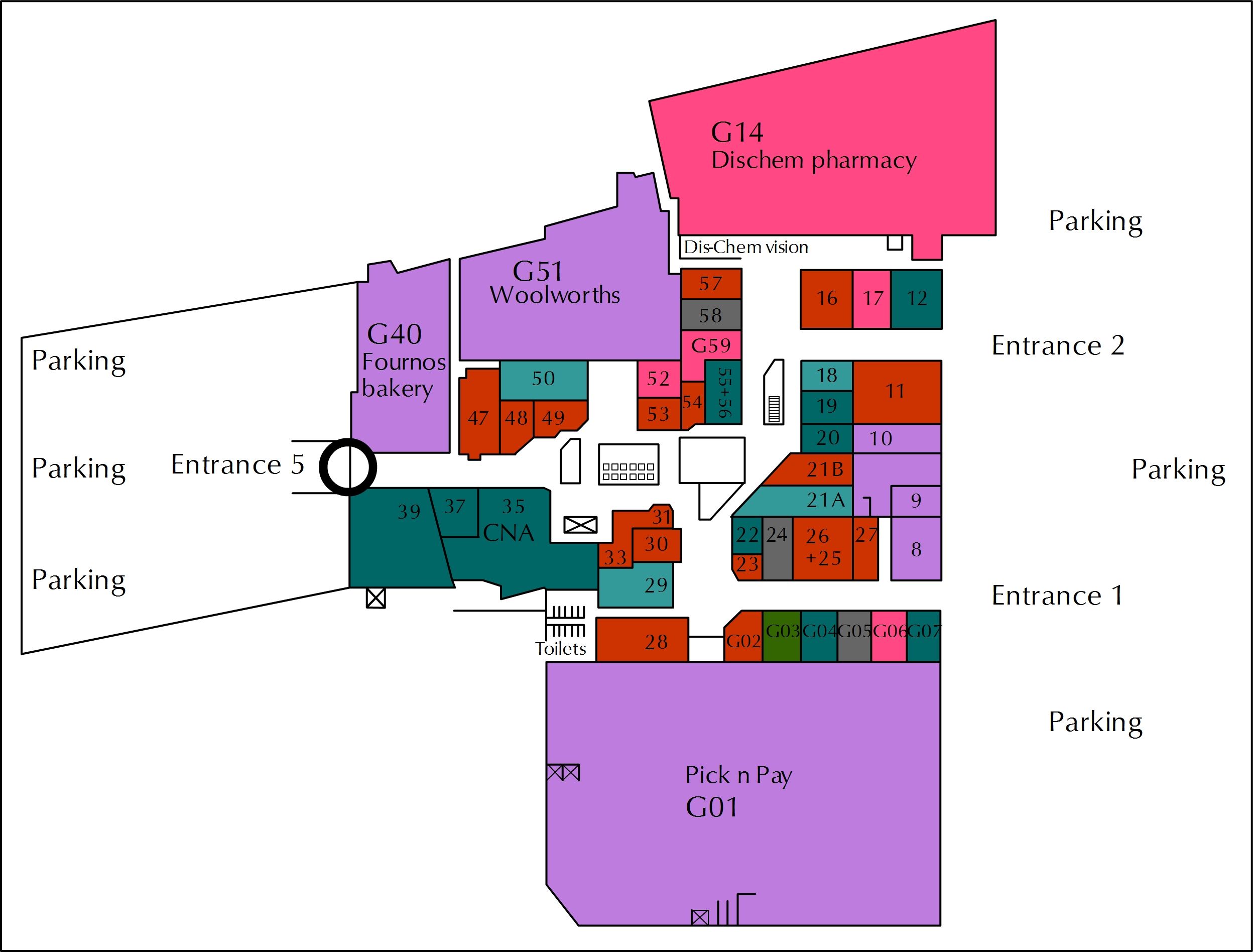
You want to go to Shop 37 to buy new shoes. What store will you find next to it?
Shop 35: CNA
What does “G51 Woolworths” mean on this map?
Woolworths is Shop 51 on the ground floor.
Do you think this shopping centre has more than one floor? Explain your answer.
Yes - there are stairs indicated on the map.
Where should you park if you want to go to Fournos bakery and buy some fresh bread?
Near Entrance 5.
Name the two stores you could buy stationery from and describe how you would get to each of them from Entrance 1.
1. CNA: Go straight towards Shop 29. Turn right, go left around the corner at Shop 31. Go straight. CNA will be on your left. 2: Pick n Pay: Go straight passing shops G07 - G02 on your left. Turn left into the entrance of Pick n Pay.
If you are at Entrance 2, explain how you would get to the toilets.
Go straight, turn left at Shop 18, in front of the stairs. Walk past shops 18 - 23 (following the mall as it curves to the right). Turn slightly left towards Pick 'n Pay. Just before Pick 'n Pay, turn right, between shops 28 and 29. Go straight down this passageway, the toilets are at the end.
You are standing at the entrance of Dis-Chem. Your friend arrives at Entrance 5 and wants to meet you. Give your friend directions to explain where they will find you.
Go straight, keeping to the left of the escalators in the middle. Pass the entrance to Woolworths on your left. Pass shops 53 - 56 (on your left) and then turn left in front of the escalators/stairs. Go straight, passing shops G59, 58 and 57. Dis-Chem will be in front of you.
|
Previous
6.2 Number and bar scales
|
Table of Contents |
Next
End of chapter activity
|